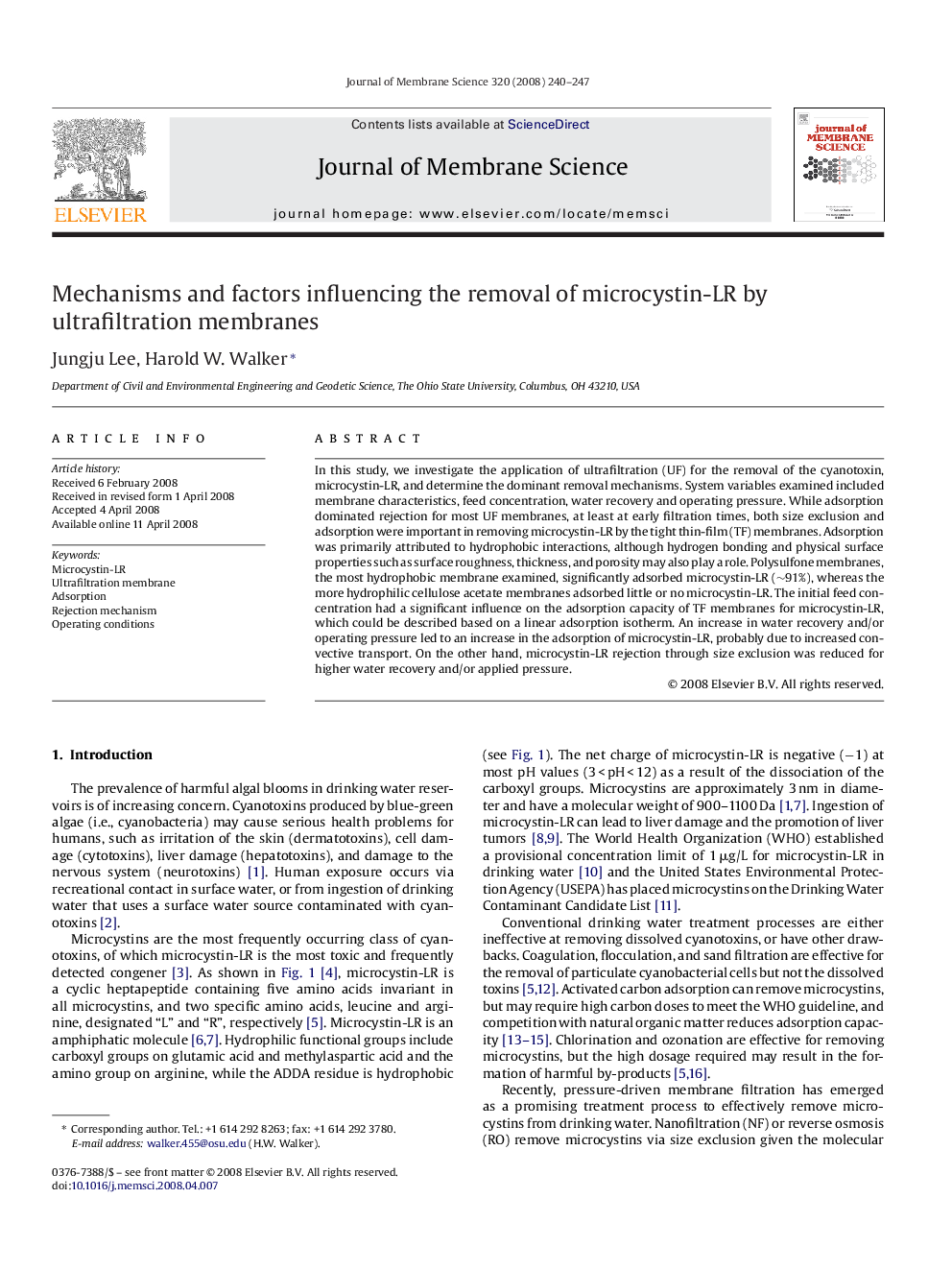| کد مقاله | کد نشریه | سال انتشار | مقاله انگلیسی | نسخه تمام متن |
|---|---|---|---|---|
| 637499 | 1456153 | 2008 | 8 صفحه PDF | دانلود رایگان |

In this study, we investigate the application of ultrafiltration (UF) for the removal of the cyanotoxin, microcystin-LR, and determine the dominant removal mechanisms. System variables examined included membrane characteristics, feed concentration, water recovery and operating pressure. While adsorption dominated rejection for most UF membranes, at least at early filtration times, both size exclusion and adsorption were important in removing microcystin-LR by the tight thin-film (TF) membranes. Adsorption was primarily attributed to hydrophobic interactions, although hydrogen bonding and physical surface properties such as surface roughness, thickness, and porosity may also play a role. Polysulfone membranes, the most hydrophobic membrane examined, significantly adsorbed microcystin-LR (∼91%), whereas the more hydrophilic cellulose acetate membranes adsorbed little or no microcystin-LR. The initial feed concentration had a significant influence on the adsorption capacity of TF membranes for microcystin-LR, which could be described based on a linear adsorption isotherm. An increase in water recovery and/or operating pressure led to an increase in the adsorption of microcystin-LR, probably due to increased convective transport. On the other hand, microcystin-LR rejection through size exclusion was reduced for higher water recovery and/or applied pressure.
Journal: Journal of Membrane Science - Volume 320, Issues 1–2, 15 July 2008, Pages 240–247